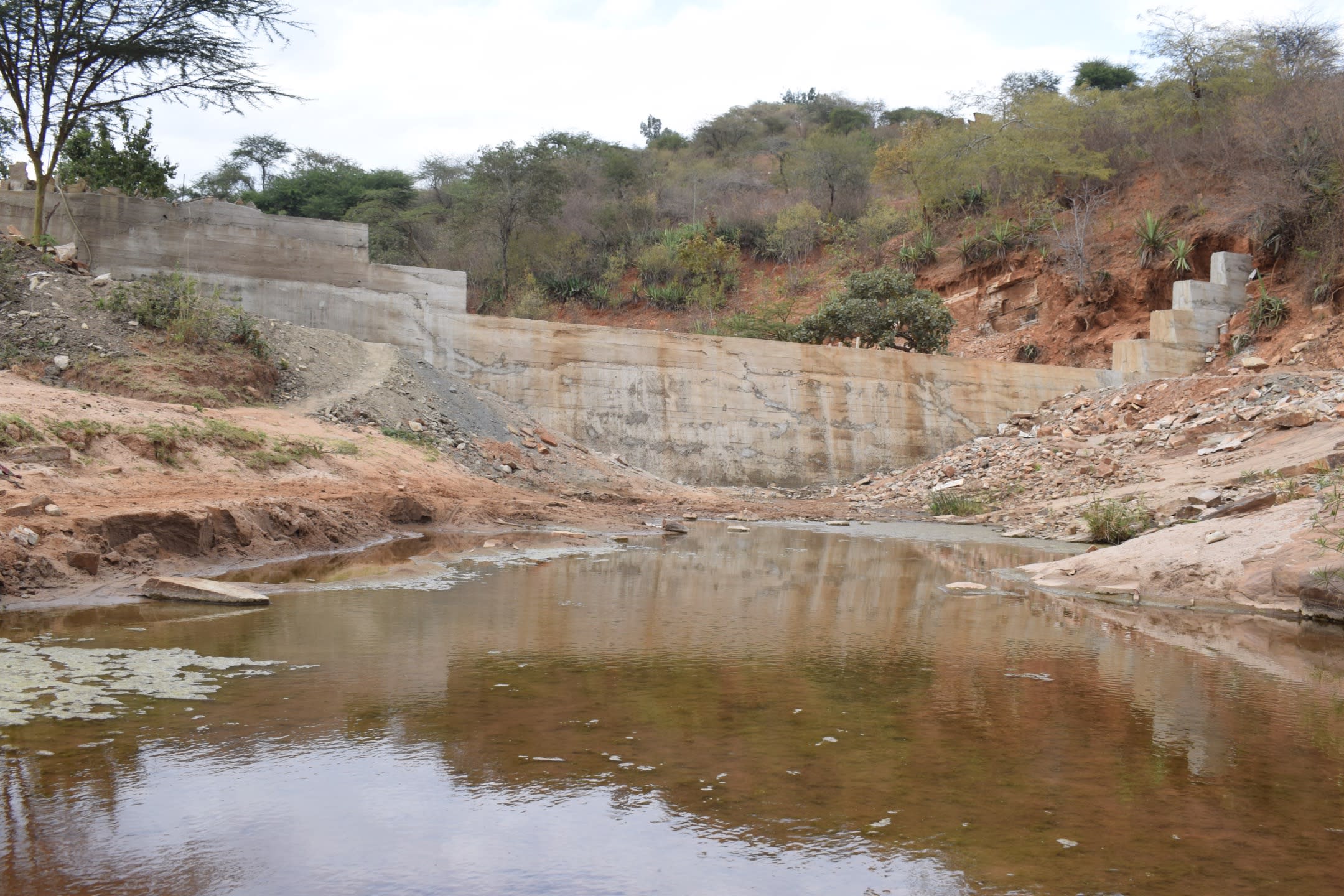Kyamwalye community is a largely populated area that is home to more than 1,400 people. The area is in a quiet rural location with sloping terrain. Most of the roads leading to the location are dry weather roads, with limited tree coverage made of indigenous tree species.
On an average day for community members here, the women and children wake up at 6:00 am. First, women prepare breakfast for the family while children get ready for school. Then, the women head to the river to get water for their families' use, either using donkeys or carrying it on their backs.
Community members depend on scoop holes in the Kaiti River for all their water needs. The scoop holes dug into seasonal riverbeds are shared by people and wild animals, exposing the water in the open holes to contaminants that cause waterborne illnesses. The water points are prone to drying up during the driest months of the year when there is no rain, which makes the community even more vulnerable to water challenges.
"I always have to walk to the river fetching water daily in the morning and in the afternoon to cater for the water needs of my family. Sometimes, I find so many people in line, I end up taking more than 30 minutes waiting for my turn," said Kanini Mwongela.
"The water is never clean, and sometimes it looks colored, which makes it not safe for drinking, but we have no other options here as it is the only water source."
Most community members in this locality engage in small-scale farming reliant on the rains. They grow maize, beans, cowpeas, pigeon peas, and green grams for home use, selling any surplus in the market. Others choose to farm along the river, but their success is limited and tied directly to the river's seasonal flow.
During the day, women do the laundry, tidy up the house, wash utensils, and prepare lunch and supper for their families. Depending on the size of their household and its water needs, many women and children may be required to travel back to the water source multiple times each day to get enough water for their use at home, especially in the evening after school.
"Our area has suffered from marginalization by successive government regimes with no tangible water project ever being implemented here. This compels households to fetch water from river scoop holes even in modern times. The water is not enough to engage in agriculture and build wealth, leading to a high poverty index among our people," said Robert Kimina.
What we can do:
Our main entry point into Kyamwalye Community has been the Kyeni Kya Kiianzou Self-Help Group, which is comprised of households that are working together to address water and food scarcity in their region. These members will be our hands and feet in constructing water projects and spreading the message of good hygiene and sanitation to everyone.
Sand Dam
After the community picked the ideal spot, our technical team went in and proved the viability by finding a good foundation of bedrock. Now, our engineers are busy drawing up the blueprints.
We are unified with this community to address the water shortage. As more sand dams are built, the environment will continue to transform. As the sand dams mature and build up more sand, the water tables will rise. Along with this sand dam, a hand-dug well will be installed to give the community a way to access that water.
Building this sand dam and the well in this community will help bring clean water closer to hundreds of people living here.
Training
These community members currently do their best to practice good hygiene and sanitation, but their severe lack of water has been a big hindrance to reaching their fullest potential.
We will hold hygiene and sanitation training sessions with the Kyeni Kya Kiianzou Self-Help Group and other community members to teach about important hygiene practices and daily habits to establish at the personal, household, and community levels. This training will ensure that participants know they need to make the most out of their new water point as soon as the water is flowing.
One of the most important topics we plan to cover is handling, storing, and treating water. Having a clean water source will be extremely helpful, but it is useless if water gets contaminated by the time it is consumed. We will also emphasize the importance of handwashing.
The community and we strongly believe that all of these components will work together to improve living standards here, which will help to unlock the potential for these community members to live better, healthier lives.
We typically work with self-help groups for three to five years on multiple water projects. We will conduct follow-up visits and refresher training during this period and remain in contact with the group after all of the projects are completed to support their efforts to improve sanitation and hygiene.

 Sand Dam
Sand Dam
 Rehabilitation Project
Rehabilitation Project

































